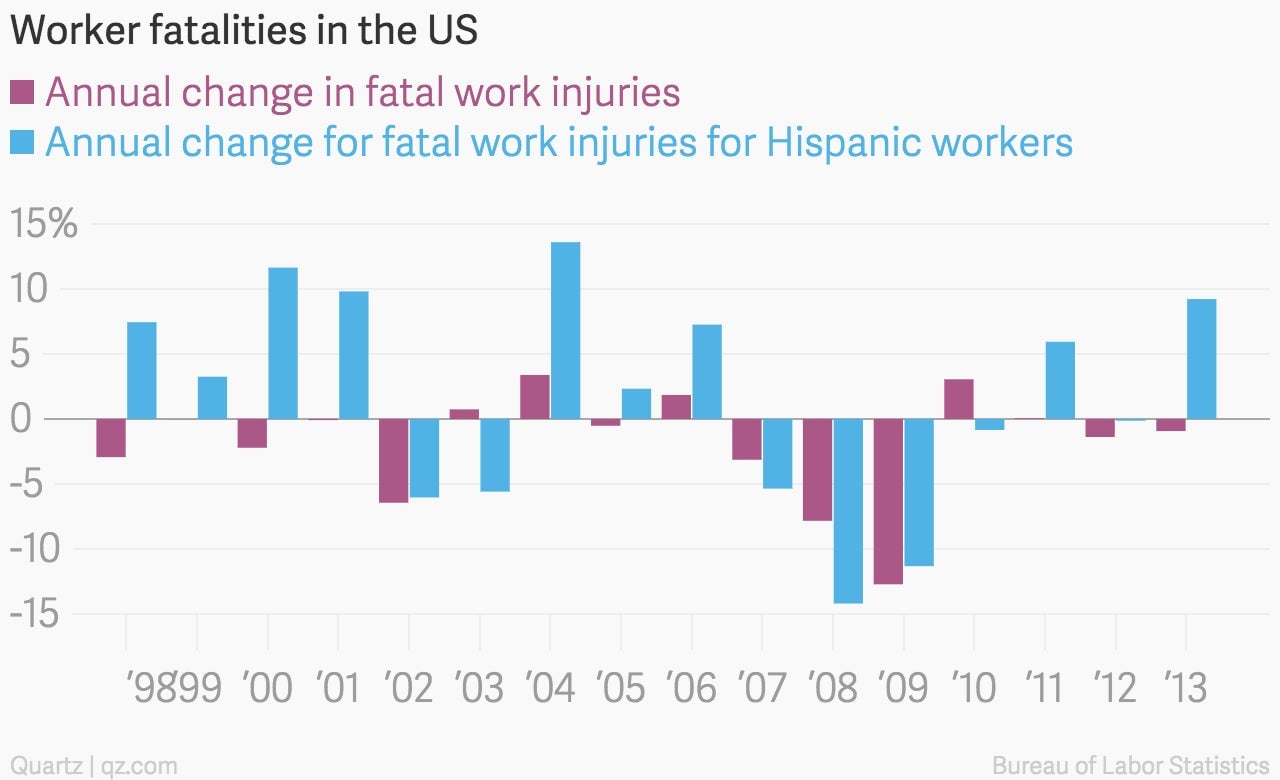A grisly death at a Bumble Bee tuna plant puts a larger trend in sharp relief
When the Los Angeles district attorney’s office filed charges yesterday (April 28) against Bumble Bee Foods and two company employees for their role in the 2012 death of Jose Melena, it was hard not to fixate on the grisly way Melena had died, trapped in an industrial oven that was cooking 12,000 pounds of tuna.


When the Los Angeles district attorney’s office filed charges yesterday (April 28) against Bumble Bee Foods and two company employees for their role in the 2012 death of Jose Melena, it was hard not to fixate on the grisly way Melena had died, trapped in an industrial oven that was cooking 12,000 pounds of tuna.
The sensational details make it tempting to write this story off as a freak accident, but it unfortunately reflects a grim reality about on-the-job fatalities among Hispanic workers. In 2013, there were 817 fatal work injuries involving Hispanic or Latino workers, the highest since 2008. In the US, Hispanics are the only racial/ethnic group seeing an increase in these numbers, according to the US Labor Department’s Bureau of Labor Statistics.

There are several factors contributing to the trend, says Catherine Singley Harvey of the National Council of La Raza, a national Hispanic civil rights and advocacy organization in the US.
First, Hispanic workers are overrepresented in many of the industries (pdf, p. 14) where worker fatalities are more common, such as construction and manufacturing. According to US census data, while Hispanics over the age of 16 made up 15.6% of the total US population in 2013, Hispanic workers accounted for 26.5% of the food manufacturing workforce, 33.6% of workers in animal slaughter and processing, and 23.2% of workers in the seafood and other, miscellaneous food industries.
Another reason for the comparatively high fatality rates: the language barrier. “Basic communication issues are a problem,” Singley Harvey says. When supervisors can’t explain safety protocol to their workers, injuries and deaths can result. (Paradoxically, many Hispanic workers are drawn to food manufacturing because the facilities often hire multilingual plant and floor managers.)
A “culture of fear in the workplace”—driven often by concerns about job instability or immigration status, Singley Harvey says—also makes workers less likely to raise a complaint about a safety hazard.
It’s unclear which, if any, of these factors contributed to Melena’s death at Bumble Bee. But the statistics suggest it’s worth examining the case for lessons that could be applied elsewhere.